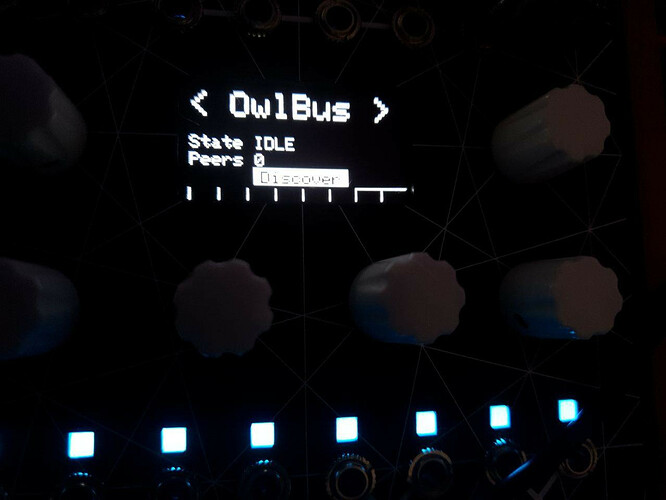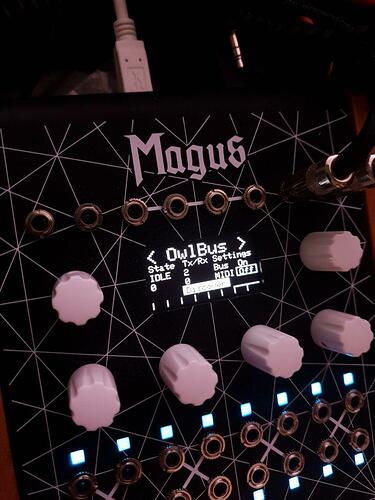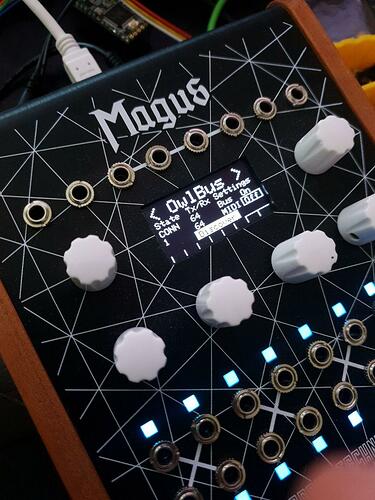The Magus PCB has three 3-pin JST PH connectors marked BUS1, BUS2 and BUS3.
BUS1 is a serial port, BUS2 is I2C, and BUS3 is used for the mini-jack MIDI out.
Bus connector pins, function, name on OWL Digital board and MCU assignments are:
BUS1 Pin 1: UART TX, OWL A3, PA2
BUS1 Pin 2: GND
BUS1 Pin 3: UART RX, OWL A4, PA3
BUS2 Pin 1: I2C SDA, OWL A17, PB9
BUS2 Pin 2: GND
BUS2 Pin 3: I2C SCL, OWL A16, PB8
BUS3 Pin 1: +5v via 220R resistor
BUS3 Pin 2: GND
BUS3 Pin 3: UART TX via 220R resistor, OWL A3, PA2
On the Magus Modular, BUS2 is connected to the EXT jack on the expander, with pin 1 on tip, pin 3 on ring, gnd on sleeve. BUS3 is connected to the MIDI jack in the same way.
On the Magus Desktop, the EXT jack on the back of the device is connected to BUS3, to provide MIDI output with the mini-jack to DIN converter. To access I2C instead, unplug the cable from BUS3 and plug it into BUS2.


